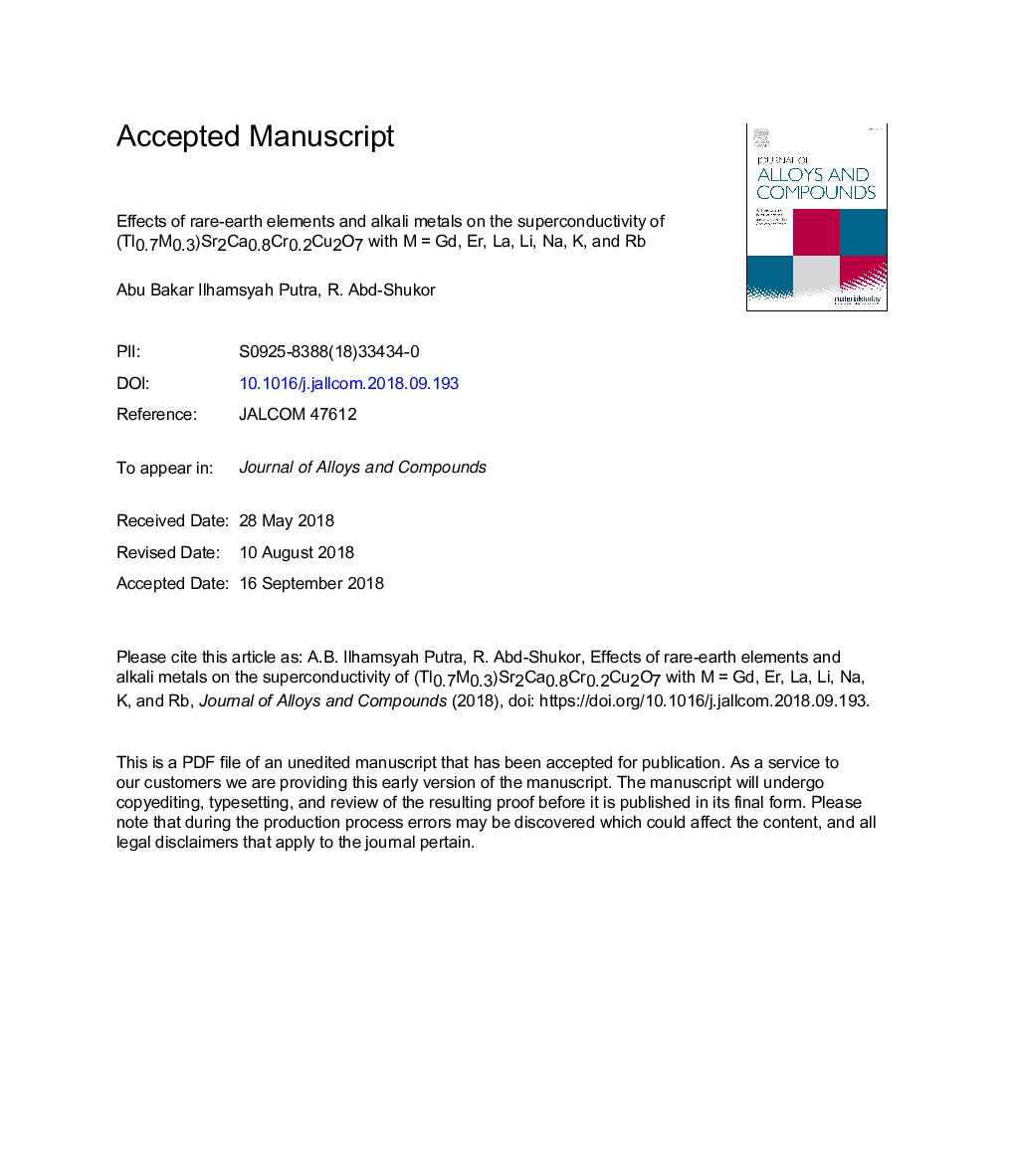| Article ID | Journal | Published Year | Pages | File Type |
|---|---|---|---|---|
| 10156018 | Journal of Alloys and Compounds | 2019 | 24 Pages |
Abstract
The effects of rare-earth elements Mâ¯=â¯Gd, Er, and La and alkali metals Mâ¯=â¯K, Li, Na, and Rb substitutions on Tl0.7M0.3Sr2Ca0.8Cr0.2Cu2O7 (Tl-1212) were investigated. The characterization includes X-ray diffraction method, scanning electron microscopy, electrical resistance and AC susceptibility measurements. X-ray diffraction patterns showed that almost all samples consisted of major Tl-1212 and minor Tl-1201 and Ca0.3Sr0.7CuO2 phase. Rare-earth elemental substitution improved the formation of the Tl-1212 phase but suppressed the transition temperature. Scanning electron micrographs showed smaller grain size in the substituted samples compared with non-substituted sample. The temperature-dependent electrical resistance measurements showed metallic normal state behavior for all samples. Alkali metals substitutions showed higher zero transition temperature, Tc-zero compared with the rare-earth elemental substitution. AC susceptibility measurements showed a higher superconducting transition, TcÏâ² for alkali metals substitutions (84-93â¯K) compared with the rare-earth elemental substitutions (50-61â¯K). The inter-grain critical current density at the peak temperature Tp of the imaginary part Ï”, Jc(Tp) measured using the Bean's model was between 17 and 22â¯Aâ¯cmâ2. The effects of rare-earth elements and alkali metals substitutions were discussed in terms of ionic radius and the concept of average Cu valence.
Related Topics
Physical Sciences and Engineering
Materials Science
Metals and Alloys
Authors
Ilhamsyah Putra Abu Bakar, R. Abd-Shukor,
